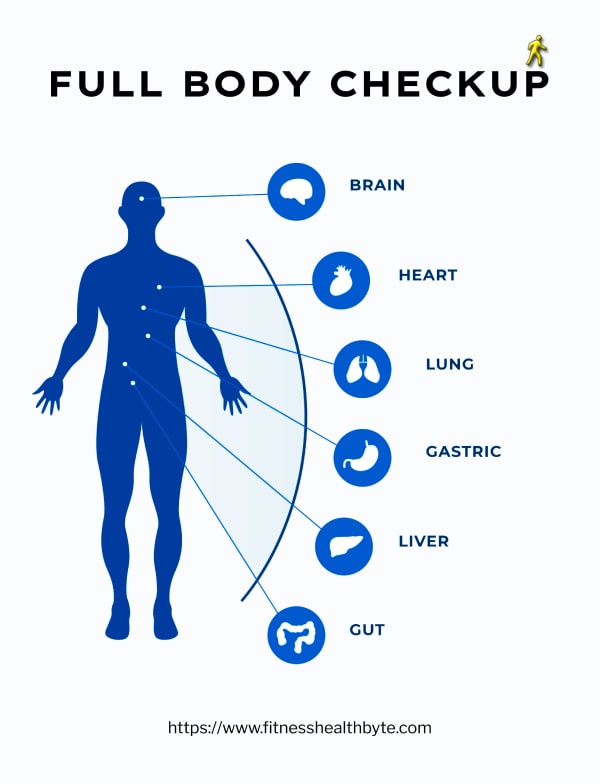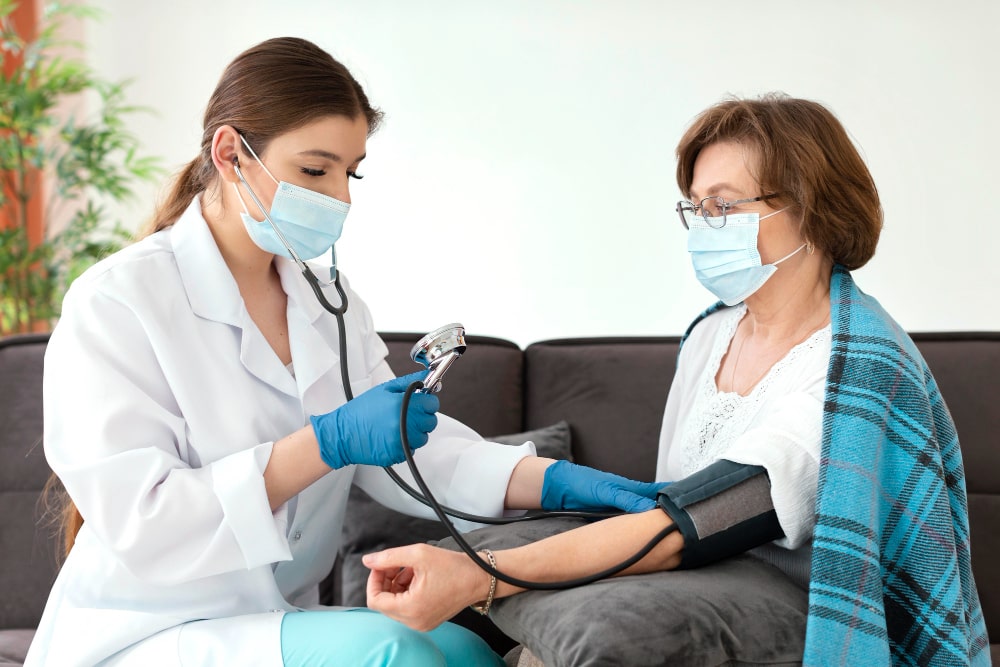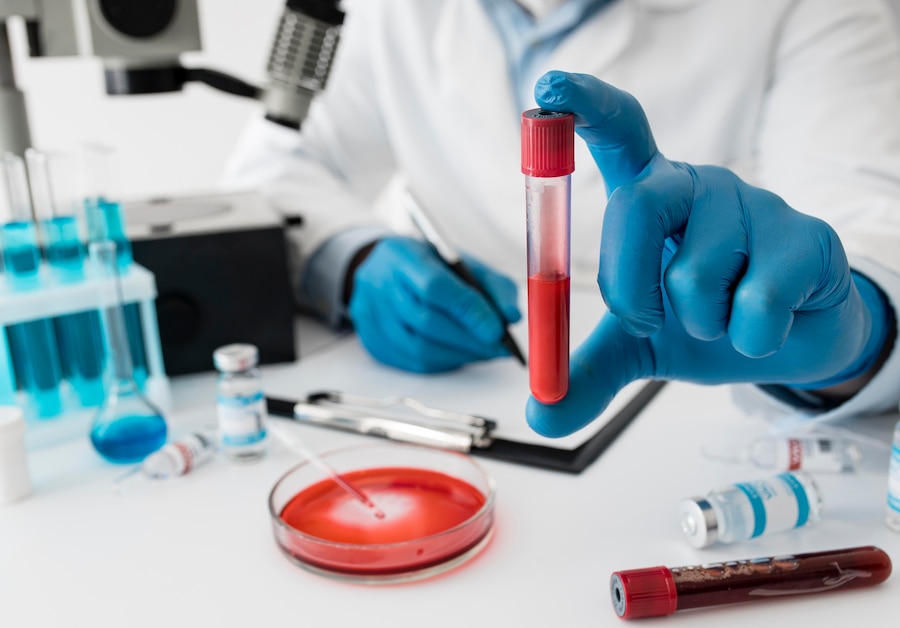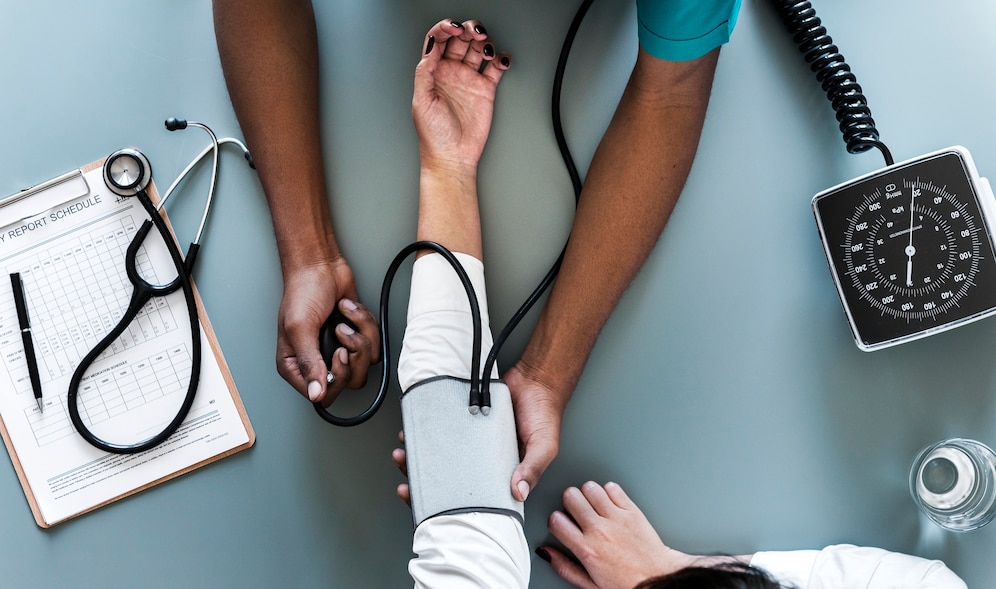Checkups are important to our health and wellness. They help us to identify any potential health risks and to catch any problems early on. But sometimes, going to the doctor can be a hassle. You might have to take time off from work, find childcare, or deal with transportation issues. That’s why more and more people are opting for full body checkup at home.
Which test is best for a full body checkup?
Are you looking for a full-body checkup at home? If yes, then you should go for a blood test. This is because blood tests are considered to be the best way to detect diseases such as diabetes, heart disease, cancer, etc.
Blood tests are also known as laboratory tests or medical tests. They are performed in hospitals or clinics. These tests are usually done to diagnose diseases or monitor health conditions.
There are several types of blood tests that are commonly used to screen for various diseases. The most common ones include complete blood count (CBC), lipid panel, thyroid function tests, vitamin D levels, glucose levels, hemoglobin A1c, liver enzymes, and kidney function tests.
What is a vital full body checkup?
Vitality is a term often associated with youthfulness. But what does it really mean? Is it possible to live a long life without being fit? What should you look out for during a full body checkup at home?
A full body checkup is a medical examination that involves checking every part of the body. This includes looking at your heart, lungs, liver, kidneys, bones, muscles, skin, eyes, ears, nose, throat, mouth, teeth, gums, breasts, testicles, ovaries, prostate gland, and other organs.
It is important to get regular health checks because they can detect diseases early. They also provide information about your overall health status and help identify risk factors such as high blood pressure or diabetes.
How much does a full body checkup cost in India?
A full body checkup cost varies from a minimum of Rs. 350 to 20000 or more than Rs. 20000 in India. How much does it cost in the US?
Full body checkups are important because they allow doctors to detect health issues early. They also provide information about your overall health status, such as cholesterol levels, blood pressure, heart rate, etc.
Full body checkups are expensive in the US. In the US, they cost around ($30 -$40). In the UK, they cost £20 ($28)
How effective is a full body checkup at home?

A full body checkup is a medical examination that involves checking every part of your body from head to toe. Is it really necessary?
A full body checkup is usually recommended after age 40. The reason is that your risk of developing certain diseases increases with age.
However, some experts believe that a full body checkup should be performed at least once a year. This is because it helps detect potential health problems early on.
Top Health checkups should consider
1. Blood pressure
Blood pressure is a measure of how important blood is flowing through your arteries. However, it means that your heart is working harder than normal If your blood pressure is high. High blood pressure can lead to stroke, heart attack, order sickness, and indeed death.
2. Cholesterol
Cholesterol is a moldable substance that makes up about half of the fat content in our bodies. It helps make hormones and vitamin D, and keeps cells strong and flexible. Too much cholesterol can invoke plaque buildup in your arteries and increase your risk of heart disease. A diet rich in whole grains, fruits, vegetables, nuts, seeds, fish, and legumes may help lower your cholesterol levels.
3. Diabetes
Diabetes is a condition where your body does not produce enough insulin, a hormone that regulates sugar in your bloodstream. Beta cells in your pancreas create insulin. When diabetes occurs, these cells stop producing insulin, causing glucose( blood sugar) levels to rise above normal. Glucose builds up in the blood, damaging nerves and blood vessels. unprocessed diabetes can lead to blindness, amputation, heart attacks, strokes, and kidney failure.

4. Depression
Depression is a mood disorder characterized by feelings of sadness and loss of interest in activities you enjoy. People who suffer from depression often feel tired, have trouble sleeping, eat poorly, and lose their appetite. Symptoms of depression can vary depending on what stage of life you are in. For example, people in middle age or older may suffer symptoms differently than those in younger years.
5. Heart Disease
Heart disease refers to any damage done to the heart muscle or valves. There are many different types of heart disease, including coronary artery disease, natural heart defects, cardiomyopathy, rheumatic fever, and valvular heart disease. The most common type of heart disease is coronary artery disease, which includes the hardening of the arteries due to poor circulation. Other types of heart disease include congestive heart failure, atrial fibrillation, and valve disorders.
6. High Blood Pressure
High blood pressure is when your blood pressure is higher than140/90 mmHg. Your doctor will perform several tests to determine if your blood pressure is high. You may need to take medicine to keep your blood pressure under control. High blood pressure increases your risk of having a stroke, heart attack, and kidney problems.
7. Obesity
Obesity is defined as being 20 pounds overweight or more. Being obese raises your risk of developing chronic illnesses similar as heart disease, diabetes, arthritis, cancer, and breathing problems. Obese children are more likely to turn into obese adults.
8. Kidney disease
Kidneys filter toxins from the blood and help regulate fluid balance in the body. The kidneys remove excess water and salt from the blood and excrete them in urine. If the kidneys do not work properly, fluids build up in the body and result in swelling. Over time, this buildup of fluid can damage the kidneys and reduce their ability to function normally. Damage to the kidneys can occur due to diabetes, hypertension, obesity, high cholesterol, and certain medications.
9. Stroke
Strokes are caused by bleeding inside the skull that blocks blood flow to parts of the brain. A stroke can happen suddenly without warning signs. Common symptoms of a stroke include sudden numbness or weakness of the face, arm, leg, or one side of the body; loss of vision in one eye; trouble speaking or understanding speech; dizziness or loss of balance; and confusion. Other symptoms may appear later.
10. Thyroid Problems
The thyroid gland produces hormones that control metabolism, growth, development, and other functions in the body. The thyroid gland sits just below the Adam’s apple at the base of the throat. It is shaped like an egg and contains follicles filled with thyroid hormones. In the bloodstream, hormones are released by the thyroid gland. If the thyroid gland stops producing hormones, it will affect the way your body uses energy. This can slow down your metabolism and make you gain weight.
11. Glaucoma Screening
Glaucoma screening includes measuring your intraocular pressure (IOP), visual field testing, and retinal nerve fiber layer thickness test. Intraocular pressure is the fluid pressure inside your eyeball. When IOP rises above normal, it can damage your optic nerves. Retinal nerve fibers transmit information between the retina and the brain. In some cases, they become damaged and do not function properly. Visual field testing shows how well you can see objects around you and retinal nerve fiber thickness tests show whether your eyesight is getting worse over time.
12. Colon Cancer Screening
Colon cancer screening includes stool tests, sigmoidoscopy, colonoscopy, and barium enema. Stool tests look for changes in your bowel movements that could indicate colon cancer. Sigmoidoscopy looks at the lower end of your large intestine. Colonoscopy is similar to sigmoidoscopy except doctors use a flexible tube to examine the entire length of your large intestine. A barium enema is an X-ray of your large intestine filled with barium.
A colon exam looks for any irregularities in your colon. These can include polyps, tumors, bleeding, or ulcers. Your doctor may recommend testing stool samples for fecal occult blood, which is a sign of internal bleeding.
13. Hemoglobin A1c

HbA1c is a protein produced by red blood cells. Hemoglobin A1c (A1C) is a blood test used to measure average blood glucose levels over several months. The test is also called HbA1c or glycosylated hemoglobin.
Glycemic control refers to keeping blood sugar levels within normal ranges. This helps prevent complications from diabetes such as heart disease, stroke, kidney failure, nerve damage, blindness, amputation, and death.
To achieve good glycemic control, patients should monitor their blood sugar levels regularly and adjust their medications accordingly.
An elevated level of HbA1c indicates poor control of blood glucose. Poorly controlled blood glucose increases the risk of developing chronic conditions such as type 2 diabetes, heart disease, stroke, and kidney disease.
14. Lipid Profile
Lipids are fats that are carried in the bloodstream. Total cholesterol, LDL cholesterol, HDL cholesterol, and triglycerides are some of the lipid profile tests performed to evaluate the status of the patient’s health. These tests help determine if the patient is at risk for cardiovascular disease and other metabolic disorders.
15. Homocysteine
Homocysteine is a sulfur containing amino acid that is formed from methionine. Homocysteinemia is an abnormal condition where homocysteine levels are elevated in the blood. Increased homocysteine levels have been linked to atherosclerosis, thromboembolic events, and Alzheimer’s disease.
16. Eye Exams
Eye exams are necessary for everyone at least once a year. In addition to checking your eyesight, they can detect certain eye problems, including cataracts, glaucoma, keratoconus, and retinopathy among others. Your optometrist can also check for any abnormalities in the cornea, retina, lens, iris, and optic nerve.
17. Lung exam
A lung exam helps identify any abnormalities in your lungs. You could have asthma, emphysema, chronic obstructive pulmonary disorder (COPD), or cystic fibrosis. A lung exam may involve taking a quick history about your symptoms and performing a physical examination. It may also require breathing tests and/or chest x-rays.
18. Prostate exam
The prostate gland produces seminal fluid that carries sperm cells. Therefore, a good prostate exam can help detect prostate enlargement, cancer, infection, or inflammation. You should discuss this exam with your doctor before having it done. A digital rectal exam involves touching your penis to feel for lumps and bumps. A full prostate exam includes checking for blood in the urine, pain while urinating, and swelling around the testicles.
19. Breast exam
Your breasts provide nourishment to breastfed babies and produce milk for women after childbirth. A breast exam can help determine whether there are any changes in size, shape, color, or firmness of the breasts. Your doctor may perform a breast self-exam to find any unusual lumps or tenderness. She may use her fingers or a special instrument to examine the nipples, underarm area, and between the breasts.
20. General Physical Exam
A general physical exam is a good way to ensure that you don’t have any medical problems that could possibly affect your health. You should get these checkups annually, and if you notice anything out of place, make sure you tell your doctor right away.
Top 5 benefits of getting a Full Body Checkup
Conclusion
Overall, getting a full body checkup at home is a great way to ensure that you are staying healthy and keeping an eye on any potential health problems. By using one of the many online resources or apps available, you can easily schedule these checkups and keep track of your results over time. Additionally, many insurance companies will cover the cost of these services, making them even more affordable. So why not give it a try?

I think you do better in life when you FEEL GOOD.
For me, leading a healthy lifestyle involves much more than just working out. It involves warming up, stretching, eating a healthy diet, and having the required rest and sleep. I enjoy assisting people in seeing and experiencing what their bodies are capable of with just enough effort. I make it my mission to assist you in leading a happy and balanced lifestyle that will reduce your risks of getting future health problems.
